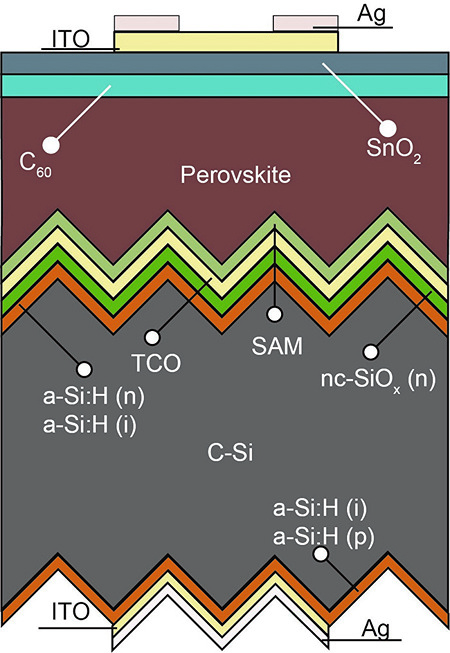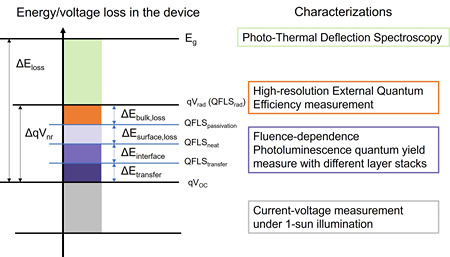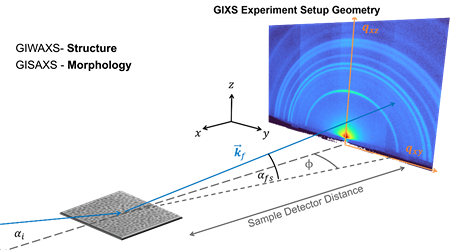Dr. Renjun Guo [Contact]
Welcome
...to the Advanced Tandem Photovoltaics Group, we are dedicated to pioneering the development of perovskite-based tandem photovoltaic technologies. Through innovative materials science, synchrotron-based characterization methods, and advanced spectroscopic techniques, we push the boundaries of tandem solar cell technology towards theoretical performance limits.
Our research contributes to the research program "Materials and Technologies for the Energy Transition" (MTET), Topic 1: "Photovoltaics and Wind Energy", in the research field "Energy" as defined by the Helmholtz Association. Link to MTET website.
Research
 Perovskite-based tandem technology Perovskite-based tandem technology
Perovskite-based tandem technology represents a cutting-edge approach in photovoltaics, aiming to surpass the efficiency limits of conventional single-junction solar cells. By stacking a wide-bandgap perovskite top cell with a lower-bandgap bottom cell (such as silicon or CIGS), tandem architectures enable more effective utilization of the solar spectrum. This technology combines the high tunability and solution-processability of perovskites with the proven stability and scalability of established PV materials, offering a promising pathway toward low-cost, high-efficiency solar energy conversion. DOI: https://doi.org/10.1038/s41586-024-07226-1.
|
 Device physics of solar cells Device physics of solar cells
The device physics of solar cells explores the fundamental principles that govern how solar cells convert sunlight into electrical energy. This research focuses on charge generation, separation, transport, and collection within different photovoltaic materials and architectures. By understanding mechanisms such as recombination, energy band alignment, and carrier dynamics, scientists can optimize device design, enhance power conversion efficiency, and improve long-term stability. This field is critical for guiding the development of next-generation solar technologies. DOI: https://doi.org/10.1038/s41566-024-01531-x.
|
 Synchrotron-based characterizations Synchrotron-based characterizations
Synchrotron-based characterizations offer powerful tools for probing the microstructure, composition, and electronic properties of solar cell materials with exceptional precision. Techniques such as X-ray scattering, spectroscopy, and imaging enable real-time, nanoscale analysis of crystallization processes, defect formation, and interface evolution during device fabrication and operation. By providing deep insights into the structural and functional properties of photovoltaic materials, synchrotron-based studies play a crucial role in advancing the performance, reliability, and scalability of next-generation solar cells. DOI: https://doi.org/10.1038/s41560-021-00912-8.
|



 Perovskite-based tandem technology
Perovskite-based tandem technology Device physics of solar cells
Device physics of solar cells Synchrotron-based characterizations
Synchrotron-based characterizations